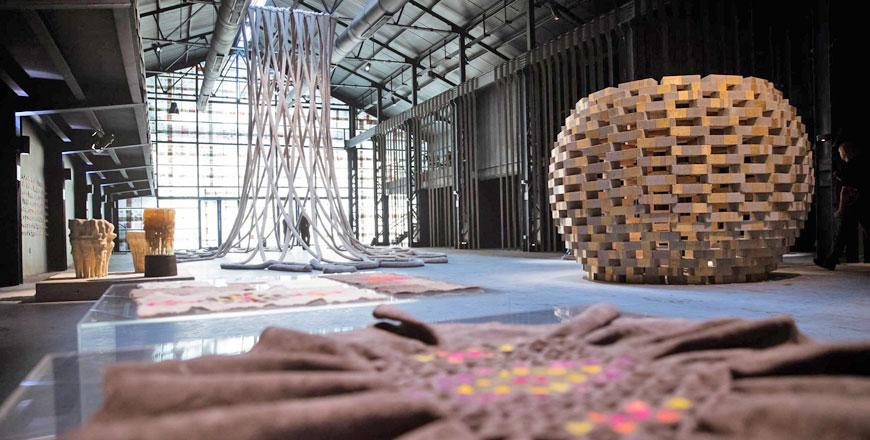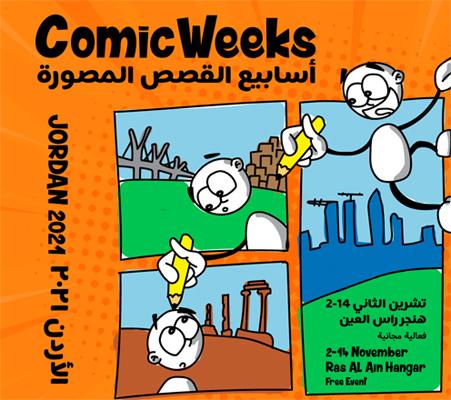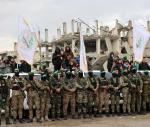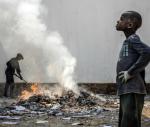You are here
For the sake of art and the environment
By Ica Wahbeh - Jan 17,2021 - Last updated at Jan 17,2021

Artwork from the ‘Recycle Art Festival, Artists For Urban Change’ exhibition on display at The Hangar through February 11 (Photo courtesy of the The Hangar)
AMMAN — Every election cycle, hundreds of thousands of square metres of non-biodegradable flex material and an equal amount of wood slats used for posters and banners are discarded, left to pollute even more the atmosphere.
It should not happen, believes a group of Jordanian artists who, last year, parliamentary elections over, made use of a large number of election posters and banners to create art.
The brainstorm of two young artists, Khuzama Abujoudeh and Hayat Hindiyeh, the idea of
re/upcycling the election material took off. The result: An exhibition of works of art by about 70 artists and designers, on display at the Hangar, downtown.
Established and upcoming artists, art students, fashion and furniture designers worked hard — observing all the health requirements imposed by the corona pandemic — and let their imagination loose to show the best of their artistic talent, in the process raising awareness to the need to protect the environment and make use of the assets at hand, without further depleting resources.
The limitations imposed by the media they used — sizes of “canvas” and of wooden slats — gave rise to some original creations. Many used the occasion to make their works into some environment manifestos. One, quite original, placed oval mirrors where the candidates’ faces had been, leaving the viewer to face his own reflection, reminding that our choices of candidates “reflect” us and we have to live with them.
One established artist ingeniously shaped hookah hoses into snakes, clearly hinting at the toxic habit of smoking; in yet another work, images associated with pollution of all sorts — a truck with gas cylinders, landmines, nuclear waste — depict a doomsday landscape towards which humanity seems to steadily slide.
Not all creations are such stark reminders of the desolation we often leave in our wake. Some are peaceful landscapes of beautiful serenity, boats — sailing, perhaps, to safer shores — or birds, like the two huge installations meeting the viewers in front of the entrance to the Hangar, which might be doves of peace.
The imagery is as varied as the artists. Painters, who form the majority, dazzle with an array of portraits, calligraphy and collages — most of the “serene” kind. A triptych of pitch-black canvases draped across with black plastic folds does, however, seem to point to the darkness polluting mankind leaves behind.
A quirky, make-happy face made of wooden slats stares at the visitors, a silent guardian of its environment. Equally original are two panels holding tens of rolled up posters; the resulting cylindrical tubes crisscross, forming a barrier of sorts. Are we trapping ourselves in the mess we create around us? The nearby cage, made of the same rolled-up flex material by the same artist, seems to confirm such assumption.
The artworks make, as they should, statements. Some more subtly than others, but all showing preoccupation with life’s aspects, with our legacy on this planet, with the need to leave behind a better world, else.
A thought-provoking installation of three vertical panels draws the eye. The facing panel, blue, serene, crisscrossed by colourful wire and holding fragments of mirrors, is the nice face we present to the world. Peering through the opening in this panel to the middle pane, one sees a huge maroon face drawn against a streaky red background; it is the hidden pain we carry and which can only be fathomed if one takes time to see it. The back panel that can be seen through the only opening in the middle panel, focuses the eye to an entanglement of shiny coppery wire, a knot interspersed with what seem to be eyes, which represents the complex, convoluted human mind.
Items of furniture, dresses, bags and shoes constitute another delightful part of the exhibition, showcasing artistic imagination and talent.
This project, which received the support of the municipality, is an initiative that could, and should, be replicated.
Last year, 1,717 individuals ran for parliament. Multiplying that number by the hundreds of posters each candidate displayed to garner votes gives an idea of the enormous amount of material left to pollute after the elections. If this material is reused, the impact on the environment may be significant.
To the civic aspect of the initiative should be added the therapeutic, psychological effect creating work of art or useful objects has on the artists, especially these days when distancing and fear of pandemic leaves us isolated, insecure and under tremendous pressure.
Aptly titled “Recycle Art Festival, Artists For Urban Change”, the exhibition will run through February 11. The proceeds “will be used to contribute to the implementation of some art sessions around Jordan”.
Related Articles
AMMAN — Young Jordanian designers see Amman Design Week (ADW), which officially opened on Thursday, as an opportunity to show their talents,
AMMAN — Local and international designers will showcase their work and “revive the city’s atmosphere” during Amman Design Week (ADW), which
AMMAN — The European Union in Jordan and the European Union National Institutes for Culture (EUNIC), in cooperation with the embassies of Be



















